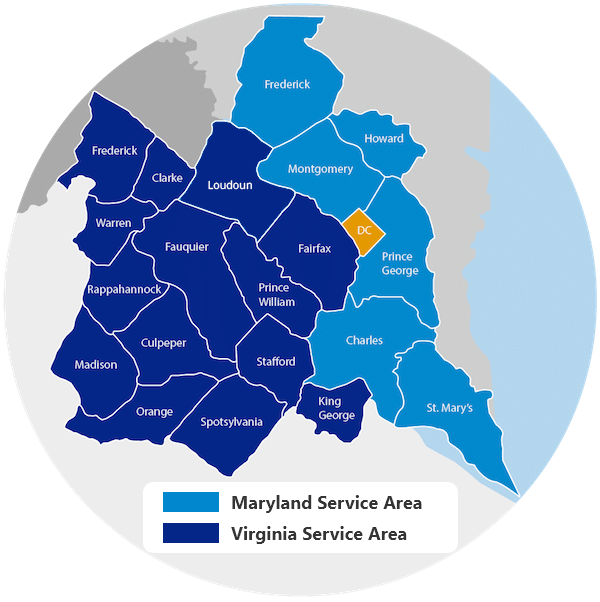Concrete Repair: Why Fixing is Better Than Replacing

Concrete is one of the most versatile building materials around. It can be poured, shaped, and molded to create everything from driveways to towering structures. Its strength and durability have made it a staple in construction for thousands of years.
But as incredible as concrete is, it’s not without flaws. Over time, it can crack, sink, or wear down due to shifting soil, weather, and general wear and tear. And while concrete is tough, producing it is tough on the environment. That’s why choosing to repair instead of replacing concrete is the smarter, more sustainable choice for homeowners.
The Environmental Impact of Concrete
Before we get into repair options, it’s important to understand the issue with concrete production. While concrete is the second most consumed substance in the world after water, its production has serious environmental consequences.
- Massive CO2 emissions: If the cement industry were a country, it would rank as the third-largest emitter of carbon dioxide after the United States and China.
- Water usage: Concrete production accounts for 9% of global industrial water consumption, and future demand is projected to strain already limited water supplies in many regions.
- Waste concerns: When replacing a driveway, patio, or sidewalk, the old concrete often ends up in landfills, adding to waste problems.
By avoiding concrete replacement, you can play a small but meaningful role in reducing these impacts while maintaining your property.
Why Repair, Not Replace?
When the concrete around your home starts to crack or sink, it’s tempting to think replacement is your only option. However, repairing concrete is not only faster and more cost-effective, but it’s also much better for the environment.
Replacing concrete involves breaking up the old slab, hauling it away to a landfill, and pouring new concrete in its place. This process requires heavy equipment, lots of resources, and days of curing time before it’s usable again. Repairing your existing concrete, on the other hand, uses far fewer resources, leaves less waste, and gets your surfaces back in shape quickly.
Concrete Repair Methods
Not all concrete repair methods are created equal. The two main techniques for lifting and fixing damaged slabs are mudjacking and polyurethane foam lifting. Here’s how they compare.
Mudjacking
Mudjacking involves pumping a mix of cement, soil, and water under the sunken slab to lift it back into position. While it can temporarily restore the level of your concrete, the process has several drawbacks that homeowners should consider:
- Large drilling holes: Mudjacking requires drilling noticeable holes in the concrete to inject the slurry underneath. These patched holes can be unsightly.
- Added weight: The mud slurry is heavy and can increase stress on the underlying soil, potentially leading to future sinking.
- Messy process: As the name suggests, mudjacking can get messy, leaving your property looking less than ideal during the repair process.
Polyurethane Foam Lifting
A more advanced option for concrete repair is polyurethane foam lifting. This method involves injecting a lightweight, expanding foam under the slab, which raises it back to its original position while stabilizing the soil below. Here’s why this method stands out as the better choice for homeowners:
- Minimal disruption: The injection holes for polyurethane foam are much smaller than those used for mudjacking. Once filled, they’re almost invisible.
- Lightweight material: Unlike the heavy slurry used in mudjacking, polyurethane foam is incredibly lightweight, reducing the risk of additional soil settlement.
- Permanent stabilization: The foam expands beneath the surface, compressing and stabilizing the underlying soil for a longer-lasting repair.
- Eco-friendly: Choosing polyurethane foam lifting means avoiding the environmental impact of breaking up and disposing of old concrete or producing new slabs.
The Practical Advantages of Concrete Repair
Environmental benefits aside, repairing your concrete instead of replacing it makes sense for a variety of practical reasons.
- Time savings: New concrete needs several days to cure before it can be used. Concrete repair methods like polyurethane foam lifting have a quicker turnaround, allowing you to use your driveway, patio, or sidewalk almost immediately after the repair.
- Lower costs: Concrete repair is often much less expensive than full replacement because it involves fewer materials, less labor, and reduced equipment needs.
- Addressing underlying issues: Replacing concrete doesn’t fix the problem that caused it to crack or sink in the first place. Polyurethane foam lifting stabilizes the soil underneath to prevent recurring issues.
Protect Your Property and Reduce Your Environmental Footprint
If the concrete around your home is cracked, sinking, or showing its age, don’t rush to replace it. Repairing your concrete is not only a smart, cost-effective solution but also a more sustainable choice for the planet.
At NV Waterproofing and Foundation Repair, we’re proud to offer advanced concrete repair solutions like polyurethane foam lifting to help homeowners restore their driveways, patios, sidewalks, and pool decks while minimizing their environmental impact.
Contact us today to learn more about how we can help you with sustainable concrete repair that saves you time, money, and headaches. Together, we can keep your property in top shape while doing our part to protect the planet.



